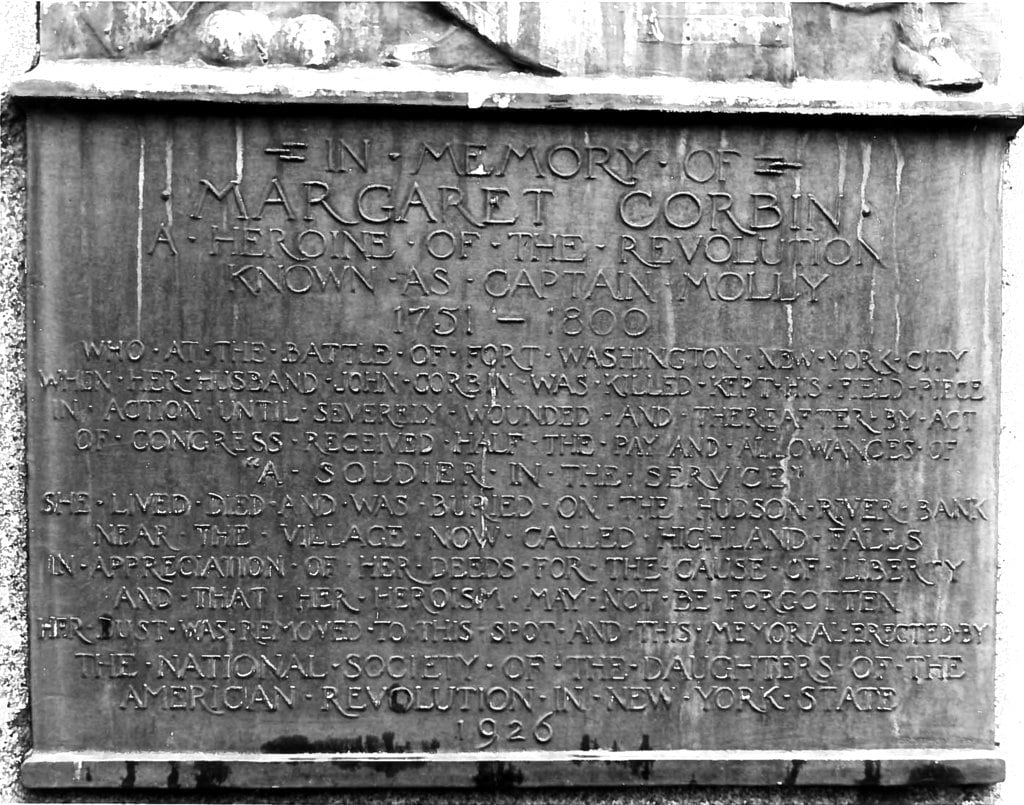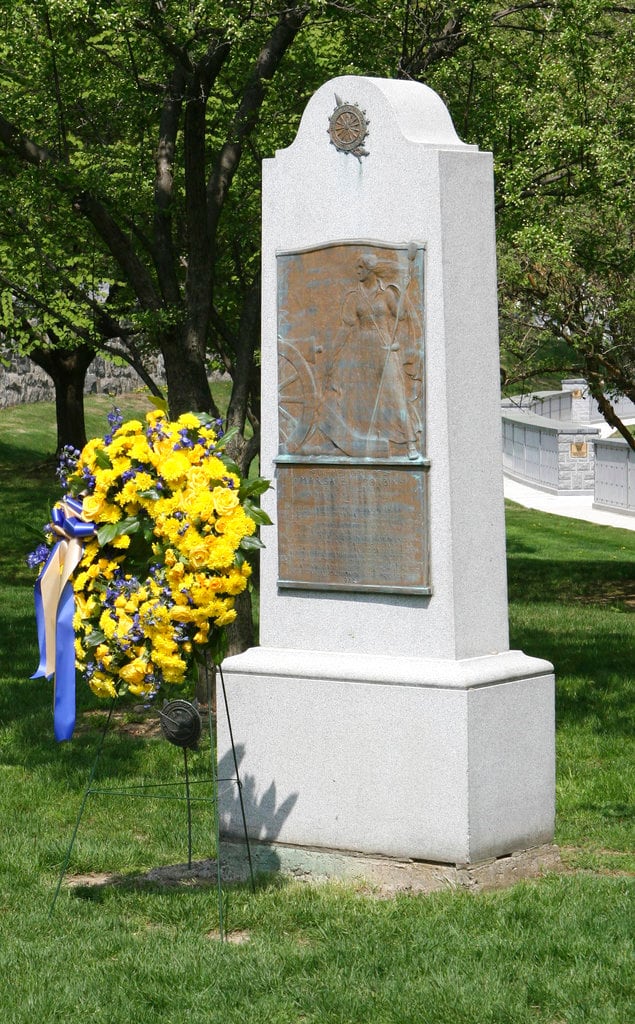Where is the body of Captain Molly?
Revolutionary War hero Margaret “Captain Molly” Corbin was long thought to be buried beneath her granite monument at the U.S. Military Academy at West Point, New York. The Daughters of the American Revolution moved her remains there in 1926 from an unmarked grave nearby. But it’s now clear they removed the wrong remains.
The mystery lingers as West Point plans Tuesday to honor the largely forgotten woman who stepped in to fire a cannon after her husband was killed in battle.
And that bothers Corbin’s admirers in the DAR. Members of the history and genealogy-minded group are leading an effort to find Corbin’s grave — for real this time — as they shine new light on the hero.
“Nineteen-twenty-six was kind of unfinished business. And so we want to make sure that we close that,” said Jennifer Minus, a DAR official who was a West Point cadet in the early ’90s when she first learned about Corbin.
RELATED

In 1776, Corbin was 24 years old and following her husband’s military unit, likely cooking and cleaning for the soldiers. She took an artillery position after her husband was killed during the Battle of Fort Washington in Manhattan and was hit by grapeshot. She was left with a grievous shoulder wound.
Corbin’s exploits may have been an inspiration for the legend of Molly Pitcher, who gave water to the soldiers in battle. But Pitcher also could have been another woman or a composite of multiple women.
Corbin traveled upriver to West Point with the “corps of invalids” and spent the latter part of her life as a boarder. Military officials fretted about finding living arrangements for someone described as infirm and troublesome. She became the first woman to earn a pension from the military, which also supplied her with old uniform items to wear. The uniforms apparently earned her the “Captain Molly” nickname.
Corbin died in 1800 at the age of 48 and was buried in a modest grave, likely near West Point. By the time the DAR decided to honor Corbin with a reburial in 1926, any marker on the 126-year-old grave was gone.
Relying in part on passed-down information from locals, the DAR pinpointed Corbin’s grave a few miles south of West Point near a cedar stump on the old riverside estate of banker J.P. Morgan. The disinterred remains were placed in a silk-lined casket and driven by hearse to the storied cemetery in West Point and a new monument depicting Corbin beside her cannon.
End of story. Until October 2016.

Excavators working near the monument accidentally disturbed the grave, starting a chain of events that led to high-tech tests on the exhumed remains. Tests showed the skeletal remains belonged to a male, probably one who lived in the 19th century.
Corbin’s missing remains are not stopping the DAR from hosting a West Point rededication ceremony at the monument on Tuesday. It will be a larger version of the annual ceremonies Minus attended as a cadet. The Virginia resident said she hopes to research possible grave sites with DAR director of public relations Bren Landon when they’re in the area for the ceremony.
Were DAR’s diggers 92 years ago off by a few feet or miles? The women have little to go on so far beyond the information their forebears relied on nine decades ago. One old photo shows a sweeping landscape with an arrow pointing to the grave — an indistinct point in the distance.
“The mystery, I stay up nights thinking about it sometimes,” Landon said.
Landon thinks a reburial at Corbin’s monument would be appropriate, but they are nowhere near proposing that. Even if they find a likely site, it may no longer be accessible since the old estate is now home to a housing development and a sewer plant. And it would be hard to verify remains through DNA, since Corbin had no known children.
Just as important to Landon is the crowdsourcing project to find more information about Corbin. DAR members and historical researchers are being asked to tackle dozens of questions. Can they confirm Corbin’s birth in Pennsylvania? What do they know about the Indian raid that allegedly left her father killed and her mother was captured when she was 5?
Landon concedes the multi-front effort could take years, but feels it’s worth it for a woman who fought for her country and died in obscurity.
“Especially because she didn’t have children, she didn’t have any family,” Landon said, “I think over the years DAR has kind of embraced her as we’re her family.”




